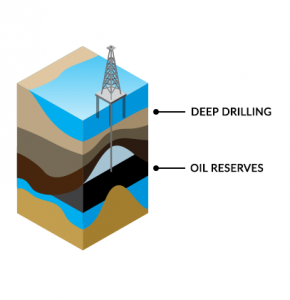All Categories
Featured
Table of Contents
Geophysical Surveying And Mapping Services (Geology ... in Cottesloe Western Australia 2021

The main model for the radial structure of the interior of the Earth is the initial referral Earth model (PREM). Some parts of this design have been upgraded by recent findings in mineral physics (see post-perovskite) and supplemented by seismic tomography. The mantle is generally composed of silicates, and the boundaries between layers of the mantle are constant with stage transitions.

This makes plate tectonics possible. Schematic of Earth's magnetosphere. The solar wind circulations from left to right. If a world's magnetic field is strong enough, its interaction with the solar wind forms a magnetosphere. Early space probes mapped out the gross measurements of the Earth's magnetic field, which extends about 10 Earth radii towards the Sun.
Inside the magnetosphere, there are fairly thick areas of solar wind particles called the Van Allen radiation belts. Geophysical measurements are usually at a particular time and location. Precise measurements of position, in addition to earth contortion and gravity, are the province of geodesy. While geodesy and geophysics are separate fields, the two are so closely linked that lots of clinical organizations such as the American Geophysical Union, the Canadian Geophysical Union and the International Union of Geodesy and Geophysics encompass both.
Career Opportunities In Geology in Mount Hawthorn Australia 2020
A three-dimensional position is determined utilizing messages from 4 or more noticeable satellites and referred to the 1980 Geodetic Reference System. An alternative, optical astronomy, combines huge coordinates and the local gravity vector to get geodetic collaborates. This method just offers the position in two coordinates and is harder to utilize than GPS.
Gravity measurements became part of geodesy since they were needed to associated measurements at the surface area of the Earth to the referral coordinate system.
Sea level can also be measured by satellites utilizing radar altimetry, adding to a more accurate geoid. In 2002, NASA launched the Gravity Healing and Environment Experiment (GRACE), where 2 twin satellites map variations in Earth's gravity field by making measurements of the distance between the two satellites using GPS and a microwave ranging system. , which are studied through geophysics and space physics.
Geophysical Survey Services in High Wycombe Western Australia 2021

Because geophysics is worried about the shape of the Earth, and by extension the mapping of features around and in the world, geophysical measurements consist of high accuracy GPS measurements. These measurements are processed to increase their precision through differential GPS processing. As soon as the geophysical measurements have actually been processed and inverted, the translated results are outlined using GIS.
Lots of geophysics business have actually created internal geophysics programs that pre-date Arc, GIS and Geo, Soft in order to meet the visualization requirements of a geophysical dataset. Exploration geophysics is applied geophysics that often uses remote noticing platforms such as; satellites, aircraft, ships, boats, rovers, drones, borehole noticing equipment, and seismic receivers.
Aeromagnetic data (airplane collected magnetic information) collected using standard fixed-wing aircraft platforms should be corrected for electro-magnetic eddy currents that are developed as the airplane moves through Earth's magnetic field. There are likewise corrections connected to changes in measured prospective field intensity as the Earth rotates, as the Earth orbits the Sun, and as the moon orbits the Earth.
Geophysical Prospecting in Yokine Oz 2022
Signal processing involves the correction of time-series information for undesirable noise or errors introduced by the measurement platform, such as airplane vibrations in gravity data. It also involves the decrease of sources of noise, such as diurnal corrections in magnetic data. In seismic data, electro-magnetic data, and gravity information, processing continues after mistake corrections to include computational geophysics which lead to the last interpretation of the geophysical information into a geological analysis of the geophysical measurements Geophysics became a separate discipline just in the 19th century, from the intersection of physical geography, geology, astronomy, meteorology, and physics.
The magnetic compass existed in China back as far as the fourth century BC. It was not till excellent steel needles could be forged that compasses were utilized for navigation at sea; prior to that, they could not maintain their magnetism long enough to be useful.
By taking a look at which of eight toads had the ball, one could figure out the instructions of the earthquake. It was 1571 years before the very first style for a seismoscope was released in Europe, by Jean de la Hautefeuille. It was never built. Among the publications that marked the beginning of contemporary science was William Gilbert's (1600 ), a report of a series of precise experiments in magnetism.
Geophysical Survey Requirements In California Waters in Craigie Oz 2022
Geochemistry, Geophysics, Geosystems. National Aeronautics and Area Administration. Recovered 13 November 2018.
Runcorn, S.K, (editor-in-chief), 1967, International dictionary of geophysics:. Pergamon, Oxford, 2 volumes, 1,728 pp., 730 fig Geophysics, 1970, Encyclopaedia Britannica, Vol. Intro to seismology (Second ed.).
Table of Contents
Latest Posts
Greeley-evans Area 3d Geophysical Survey in Bicton Australia 2022
Airborne Geophysical Methods in Bateman Western Australia 2022
Integrated Geophysical Surveys For The Safety in Beeliar Australia 2021
More
Latest Posts
Greeley-evans Area 3d Geophysical Survey in Bicton Australia 2022
Airborne Geophysical Methods in Bateman Western Australia 2022
Integrated Geophysical Surveys For The Safety in Beeliar Australia 2021